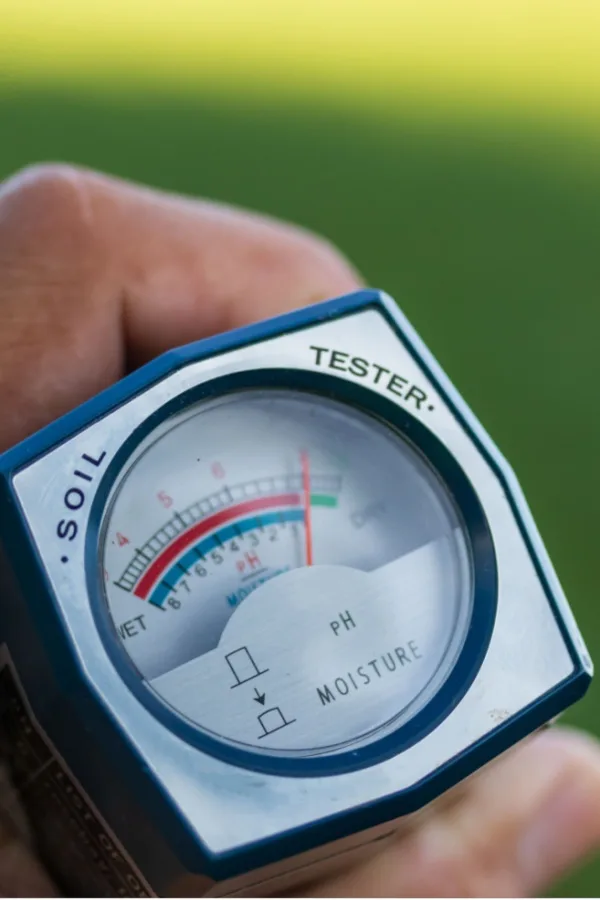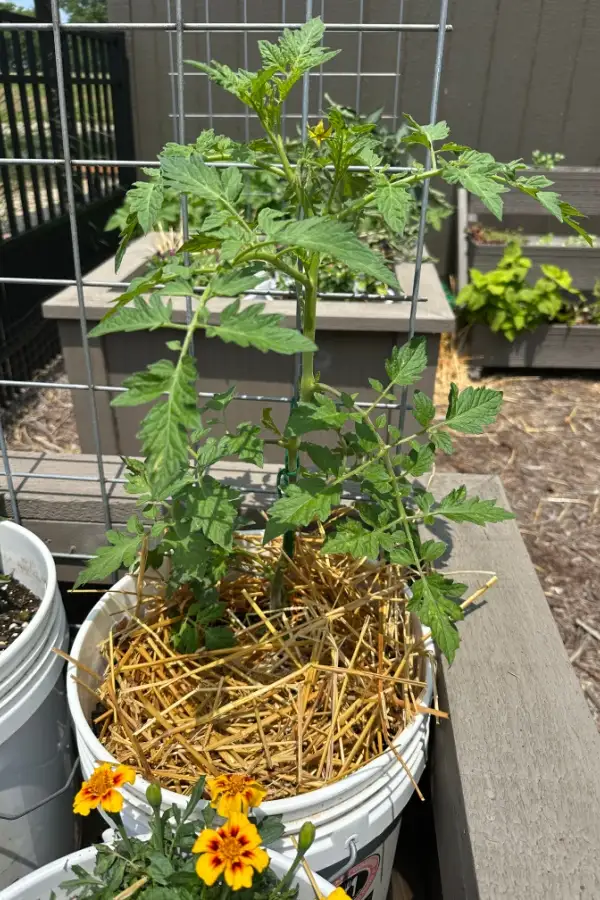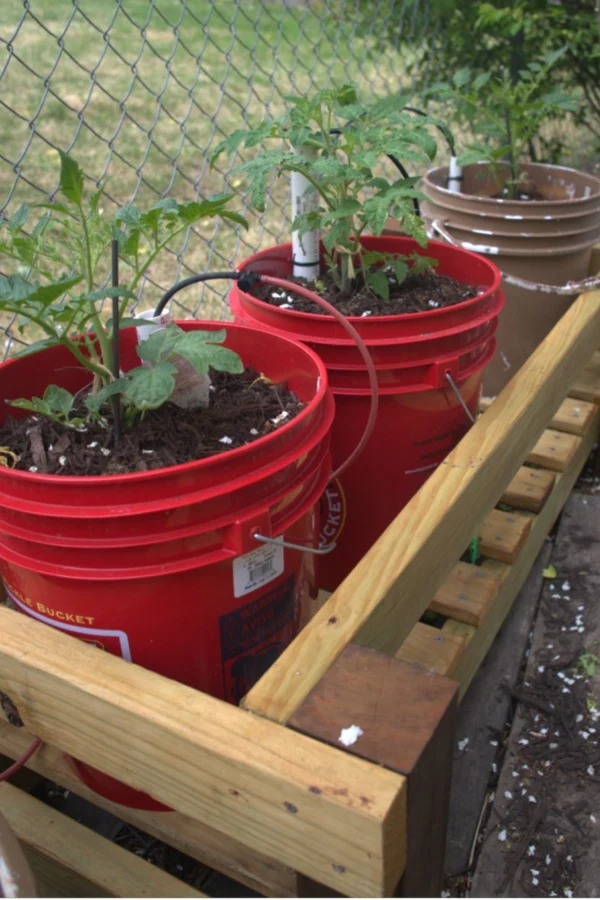When you water container tomato plants the right way, with the right amount of water, and at the right time of the day, they will thrive. But keeping them properly watered can be a challenge, especially during hot or dry weather.
Unlike tomatoes growing in the ground, container plants dry out quickly and rely completely on the gardener for consistent moisture. Knowing when and how to water is key to keeping the plants healthy and productive all season long.
However, watering container-grown tomatoes is more than just pouring water on them when they look dry. It requires consistency, attention to the weather, and a few smart techniques to keep soil moisture levels just right for a bountiful harvest.

Understanding the Watering Needs of Container Tomato Plants
Container tomato plants dry out faster than in-ground plants because their roots are confined to a smaller space. That makes them more vulnerable to dehydration, especially during hot, sunny weather. Without a buffer of surrounding soil to hold moisture, the container soil can go from damp to bone dry in a single day.
For most gardeners, watering container tomato plants is a daily task. During the peak of summer or during a dry spell, some containers may even need to be watered twice a day – once in the morning and again in the evening.
Skipping even a day can result in wilted leaves, blossom drop, or poor fruit development.
How to Tell When It’s Time to Water Tomato Plants In Containers
One of the most important skills in container gardening is knowing when to water. Many gardeners assume they should water at the same time every day, but that isn’t always accurate.
Weather, wind, container size, and the type of potting mix all play a role in how quickly the soil dries out.
A simple and reliable method to check for moisture is the finger test. Stick a finger about 1 to 2 inches into the soil. If it feels dry at that depth, it’s time to water.
However, if it still feels moist, wait a bit longer. Doing this daily gives a better idea of how quickly each container dries out.

Another tool that helps take the guesswork out of watering is a moisture meter. This inexpensive device measures soil moisture levels and gives an instant reading, usually on a scale from dry to wet.
Moisture meters are especially useful for larger containers where the surface may appear dry but the root zone is still holding water. Using a moisture meter can prevent overwatering, which is just as harmful as underwatering. (See Affiliate Product Link: Soil Moisture/pH Meter)
Best Time of Day to Water
When it comes to watering, early morning is the ideal time to water tomato plants in containers. Watering early allows the plant to soak up moisture before the heat of the day arrives.
It also reduces the chance of fungal diseases that thrive in damp conditions, as any water that splashes on the leaves has a chance to dry out in the sun.
If plants begin to wilt in the afternoon despite morning watering, a second round of water in the late afternoon or early evening may be necessary. However, avoid watering late in the evening, especially if the leaves will remain wet overnight.
How to Water Container Tomato Plants Properly
When watering, it’s important to water deeply rather than just wetting the surface. Shallow watering encourages roots to grow near the surface, making them more vulnerable to drying out. The goal is to moisten the entire root zone, not just the top inch of soil.

In shallow containers, water slowly and directly at the base of the plant until water begins to drain from the bottom of the container. This ensures that the water has reached all parts of the root system.
If water runs right out the bottom as soon as it’s poured in, it may be bypassing dry soil. In that case, water again a few minutes later to ensure the soil fully absorbs the moisture.
In general, tomato plants need 1-2 inches of water weekly. Although the amount is somewhat hard to monitor, especially trying to determine the amount of water that actually reaches the root level, a moisture meter will take the guesswork out of it. Moisture levels should range somewhere between 40-80% for tomato plants.
When you do water, be sure to avoid splashing water on the leaves as much as possible. Wet leaves can invite diseases like blight, especially in humid conditions.
Mulching to Retain Moisture
Mulch isn’t just for garden beds. Adding a layer of mulch on top of the soil in a container can dramatically reduce how quickly the soil dries out. Mulch also helps regulate soil temperature and prevents the surface from crusting over.
Some good mulching options for container tomatoes include:
- Shredded straw
- Dried grass clippings (free of chemicals)
- Coconut coir
- Pine needles
- Shredded leaves
Apply a layer of mulch about 1 to 2 inches thick, being careful not to pile it directly against the stem of the plant. This layer acts as a barrier, keeping moisture in and reducing how often the plant needs watering. (See Our Related Article: The Best Way To Mulch Tomato Plants)

Other Factors To Consider When Determining Your Watering Schedule
Choosing the Right Soil Mix
The type of potting mix used in containers plays a big role in water retention. A good mix for tomatoes should drain well but also hold enough moisture to keep the roots hydrated between waterings.
Look for a high-quality potting mix that includes ingredients like coconut coir and compost. These materials help retain moisture without becoming waterlogged. Avoid using garden soil in containers, as it tends to compact and drain poorly.
Container Size and Material Matter
The size and type of container also influence how often tomatoes need water. Smaller containers dry out faster than larger ones because they hold less soil and therefore less moisture. If possible, choose a container that is at least 18 inches in diameter for full-sized tomato plants.
Container material also plays a role. Terracotta pots are porous and tend to dry out more quickly than plastic or glazed ceramic pots. Black plastic pots can get very hot in direct sunlight, which speeds up evaporation. Light-colored containers stay cooler and retain moisture longer. (For more tips on growing tomatoes in containers, be sure to check out: How To Fertilize Tomatoes In Containers – 2 Simple Secrets To A Big Harvest!)

How To Water Container Tomato Plants When You Are On Vacation
One of the challenges of growing tomatoes in containers is figuring out how to keep them watered while away. Even two days without water in the heat of summer can cause damage to the plants.
Here are a few options to consider:
1. Ask a neighbor or friend
The simplest solution is to ask someone to water your plants while you’re gone. Leave clear instructions on how much to water and when to do it. It helps to group all the containers together to make the task quicker.
2. Use self-watering containers
Self-watering planters have a built-in reservoir at the bottom that allows plants to draw water as needed. These are especially helpful for weekend trips or for gardeners who can’t water daily.
3. Set up a drip irrigation system
For those who travel frequently, a basic drip irrigation kit connected to a timer can keep container plants watered consistently. This setup delivers water directly to the base of each plant and can be adjusted based on weather conditions.
4. DIY watering systems
If commercial systems aren’t an option, consider using water bottles to create a homemade drip system. Fill a bottle with water, poke a few holes in the cap, and insert it upside down into the soil. As the soil dries out, water slowly seeps from the bottle.
5. Water deeply and mulch heavily before leaving
If you’re only gone for a short time, water all containers thoroughly right before leaving and add an extra thick layer of mulch. Move containers to a shaded area if possible to reduce evaporation while you’re away.
Keep your container tomato plants watered correctly and it will help your plants thrive this year!
Follow Our Facebook Page For Even More Great Tomato Growing Tips! I Grow Tomatoes Facebook Page
I Grow Tomatoes is a website created for those who love all things about tomatoes – from planting and growing – to cooking and canning! We publish two articles every week, 52 weeks a year. Sign up today to follow via email! This article may contain affiliate links.
